Research
Arranged by topic.
Colloidal particles in liquid crystals
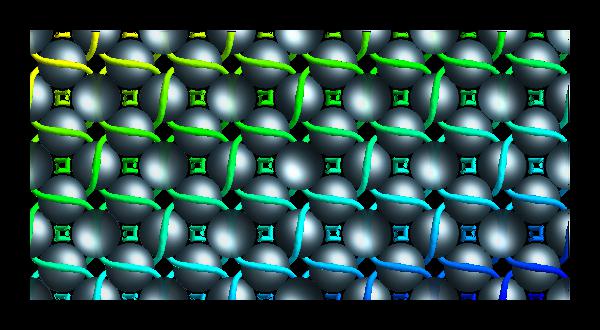 Spherically symmetric colloidal particles and suspensions have been extensively studied, both theoretically and experimentally. While spherical colloids in isotropic fluids have many potential uses, particles with anisotropic interactions have a much higher potential as the synthetic building blocks for self-assembled materials with desirable properties, such as a photonic band-gap, at the nano- or micro-scale. The anisotropic nature of liquid crystals (LCs) makes them an ideal candidate to generate non-spherically symmetric interactions between colloidal particles. In a recent article, we adjust the pitch in a cholesteric liquid crystal in order to give rise to the most energetically favourable colloid-defect structure, commensurate with the diamond lattice. This structure corresponds to defect lines travelling along symmetry axes in the diamond crystal. Once formed our diamond lattice should be stable against thermal fluctuations.
Spherically symmetric colloidal particles and suspensions have been extensively studied, both theoretically and experimentally. While spherical colloids in isotropic fluids have many potential uses, particles with anisotropic interactions have a much higher potential as the synthetic building blocks for self-assembled materials with desirable properties, such as a photonic band-gap, at the nano- or micro-scale. The anisotropic nature of liquid crystals (LCs) makes them an ideal candidate to generate non-spherically symmetric interactions between colloidal particles. In a recent article, we adjust the pitch in a cholesteric liquid crystal in order to give rise to the most energetically favourable colloid-defect structure, commensurate with the diamond lattice. This structure corresponds to defect lines travelling along symmetry axes in the diamond crystal. Once formed our diamond lattice should be stable against thermal fluctuations.
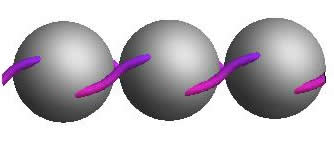 We have demonstrated that a spherical particle in a cholesteric LC can generate a tetravalent bonding structure and showed how the particles
We have demonstrated that a spherical particle in a cholesteric LC can generate a tetravalent bonding structure and showed how the particles 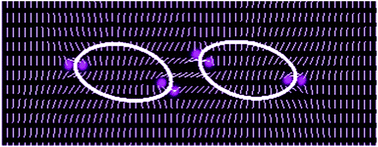 could self-assemble into double-bonded chains. If the particle has a flexible surface, the resulting liquid crystal defects and distortions lead to a non-uniform pressure exerted on the particle surface, accompanied by a deformation of its shape. The interactions between pairs of such vesicles can undergo discrete changes in shape coupled to defect movement as a function of their distance apart.
could self-assemble into double-bonded chains. If the particle has a flexible surface, the resulting liquid crystal defects and distortions lead to a non-uniform pressure exerted on the particle surface, accompanied by a deformation of its shape. The interactions between pairs of such vesicles can undergo discrete changes in shape coupled to defect movement as a function of their distance apart.
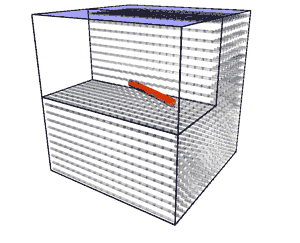 There has also been considerable
interest in generalizing micro-rheological tools, such as examining the fluctuations of microspheres to measure
local viscosities, to anisotropic fluids. However, there are complications in using spheres for micro-rheology in a liquid crystal. In particular, boundary conditions at the surface of the sphere typically
induce defects that significantly modify the director field of
the liquid crystal thus making the sphere far from a passive probe.
There has also been considerable
interest in generalizing micro-rheological tools, such as examining the fluctuations of microspheres to measure
local viscosities, to anisotropic fluids. However, there are complications in using spheres for micro-rheology in a liquid crystal. In particular, boundary conditions at the surface of the sphere typically
induce defects that significantly modify the director field of
the liquid crystal thus making the sphere far from a passive probe.
Recent experiments on nickel nanowires in a liquid crystal have shown that they can be manipulated with magnetic
fields and that the torque exerted on the wire by the liquid crystal can be directly measured. When the
wire is aligned with the director field, it causes no distortion. Thus, the use of such an anisotropic particle is ideal for
doing micro-rheology in an anisotropic fluid as they are able to probe the linear response of the solvent. Using simulations, we showed that by manipulating the wires immersed in the nematic it should be possible to infer the local elastic properties of the liquid crystal.
What happens when the square gradient coefficient is negative?
 Square gradient models for fluids are extensively used because they are believed to provide a good
qualitative understanding of the essential physics. However, unlike elasticity theory for solids,
there are essential no quantitative results for specific (as opposed to generic) fluids. Indeed
the only numerical value of the square gradient coefficients for specific fluids have been inferred
from attempts to match macroscopic properties such as surface tensions rather than from direct
measurement. We employed all-atom molecular dynamics, using the TIP3P and OPLS force fields, to
directly measure the coefficients of the density gradient expansion for several real fluids. For all
liquids measured, including water, we found that the square gradient coefficient is negative suggesting
the need for some regularization of a model including only the square gradient, but only at wavelengths
comparable to the molecular separation of molecules. The implications for liquid-gas interfaces was also examined.
Square gradient models for fluids are extensively used because they are believed to provide a good
qualitative understanding of the essential physics. However, unlike elasticity theory for solids,
there are essential no quantitative results for specific (as opposed to generic) fluids. Indeed
the only numerical value of the square gradient coefficients for specific fluids have been inferred
from attempts to match macroscopic properties such as surface tensions rather than from direct
measurement. We employed all-atom molecular dynamics, using the TIP3P and OPLS force fields, to
directly measure the coefficients of the density gradient expansion for several real fluids. For all
liquids measured, including water, we found that the square gradient coefficient is negative suggesting
the need for some regularization of a model including only the square gradient, but only at wavelengths
comparable to the molecular separation of molecules. The implications for liquid-gas interfaces was also examined.
Polymer Dynamics
 Recent developments in promising micro and nanofluidic technologies have sparked a renewed interest in the statics and dynamics of confined polymers. In a recent letter, we examine pressure-driven nonequilibrium transport of linear, circular, and star polymers through a nanochannel containing a rectangular pit with full hydrodynamic interactions and thermal fluctuations. We demonstrate that with sufficiently small pressure differences, there is contour length-dependent entropic trapping of the polymer in the pit when the pit and the polymer sizes are compatible. This is due to competition between flow and chain relaxation in the pit, which leads to a nonmonotonic dependence of the polymer mobility on its size and should aid in the design of nanofiltration devices based on the polymer size and shape.
Recent developments in promising micro and nanofluidic technologies have sparked a renewed interest in the statics and dynamics of confined polymers. In a recent letter, we examine pressure-driven nonequilibrium transport of linear, circular, and star polymers through a nanochannel containing a rectangular pit with full hydrodynamic interactions and thermal fluctuations. We demonstrate that with sufficiently small pressure differences, there is contour length-dependent entropic trapping of the polymer in the pit when the pit and the polymer sizes are compatible. This is due to competition between flow and chain relaxation in the pit, which leads to a nonmonotonic dependence of the polymer mobility on its size and should aid in the design of nanofiltration devices based on the polymer size and shape.
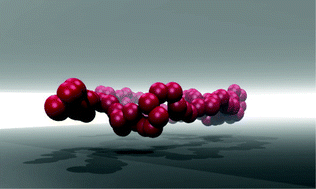 Recent developments in promising micro and nanofluidic technologies have sparked a renewed interest in the statics and dynamics of confined polymers. We investigated the transition from 3D to 2D both for static and dynamic scaling of a single polymer as a function of its confinement between two rigid parallel plates. We consider two distinct types of confinement: (i) confinement for both the solvent and the polymer, and (ii) confinement for the polymer only (in a 3D solvent), which is experimentally feasible, for instance, by (optical) trapping. We demonstrate that, in the presence of hydrodynamics, the polymer's center-of-mass diffusion coefficient in the direction parallel to the walls scales differently as a function of the level of confinement in cases (i) and (ii). We also find that in the commonly used Langevin dynamics description, the polymer swells more parallel to the walls than in the presence of hydrodynamics, and the planar diffusion coefficient shows scaling behavior similar to case (ii) rather than case (i).
Recent developments in promising micro and nanofluidic technologies have sparked a renewed interest in the statics and dynamics of confined polymers. We investigated the transition from 3D to 2D both for static and dynamic scaling of a single polymer as a function of its confinement between two rigid parallel plates. We consider two distinct types of confinement: (i) confinement for both the solvent and the polymer, and (ii) confinement for the polymer only (in a 3D solvent), which is experimentally feasible, for instance, by (optical) trapping. We demonstrate that, in the presence of hydrodynamics, the polymer's center-of-mass diffusion coefficient in the direction parallel to the walls scales differently as a function of the level of confinement in cases (i) and (ii). We also find that in the commonly used Langevin dynamics description, the polymer swells more parallel to the walls than in the presence of hydrodynamics, and the planar diffusion coefficient shows scaling behavior similar to case (ii) rather than case (i).
Polymer molecules immersed in a simple fluid interact via hydrodynamics. These interactions are generated by the fact that if the polymer moves, the surrounding fluid velocity must match the velocity of the object at its surface. We constructed a hybrid method that combines continuum fluctuating hydrodynamics with molecular dynamics, allowing discrete objects, including polymers, of arbitrary shape and stiffness to interact with a background fluid. This allows the observation of Zimm dynamical scaling for even fairly short polymer chains, provided one separates out the centre of mass motion (this requirement was first noted by Winkler's group).
Diblock-copolymers self-assemble into a variety of ordered phases. Typical samples prepared in no external field usually exhibit numerous grains of differing phase or orientation. However, applications of diblock-copolymers rely on the presence of long-range order. One way to establish this long range order is by imposing a shear. Experiments have yielded conflicting results about using the shear rate to switch between different lamellar orientations. We performed molecular dynamics simulations and constructed a liquid-crystal-like model to describe the switching as a function of shear rate. We establish the physical principles behind the shear induced transition between different lamellar phases. In addition, we show how a re-entrant phase seen in some experiments, but not all, is most likely due to a surface effect, thus reconciling the conflicting experiments.
The crucial role of chemical detail for slip-boundary conditions
In systems such as microfluidic devices and biological cells, the volumes are small and surface forces at solid-fluid interfaces start to become comparable or even larger than bulk forces, such as pressure gradients. Interfacial effects in complex fluids are poorly understood and often frustrate designs based on macroscopic models.
 We studied the role of chemical detail
We studied the role of chemical detail 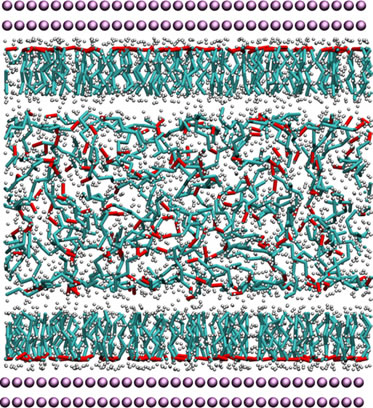 in short-linear parafins and olefins in the formation of polymer brushes on an Aluminum substrate. The presence of unsaturated bonds near the end of the chain greatly enhances the brush formation on the Al surface. In addition we examine the dramatic change in slip boundary conditions for flow over the surface. Our simulations were based on a molecular dynamics force field we developed using force matching to density functional theory with careful attention to correct reproduction of lateral as well as normal forces.
in short-linear parafins and olefins in the formation of polymer brushes on an Aluminum substrate. The presence of unsaturated bonds near the end of the chain greatly enhances the brush formation on the Al surface. In addition we examine the dramatic change in slip boundary conditions for flow over the surface. Our simulations were based on a molecular dynamics force field we developed using force matching to density functional theory with careful attention to correct reproduction of lateral as well as normal forces.
In fluid mixtures there are multiple ways to average the local velocity of the different fluid constitnuents to obtain a mean fluid velocity. This can result in deviations from the conventional Navier boundary condition that states that the slip velocity between wall and fluid is proportional to the strain rate. A general slip boundary condition is derived from the mesoscopic model that contains additional terms associated with the Marangoni stress and diffusion, and is shown to describe the atomistic simulations. In the example illustrated to the left the walls have different interactions with the two constituents of a miscible binary fluid. This coupled with a concentration gradient can drive fluid flows between the walls and rotate the green wheel in the middle of the channel.
Dense granular flow
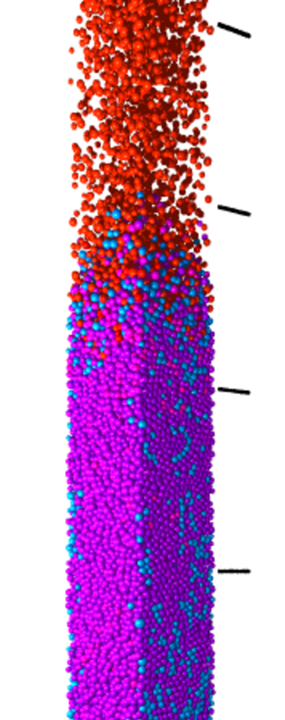 We used simulations to investigate constitutive relations in dry granular flow.
Our system was comprised of poly-disperse sets of spherical grains
falling down a vertical chute under the influence of
gravity. Three phases or states of granular matter are observed:
a free-fall dilute granular gas region at the top of the chute,
a granular fluid in the middle and then a glassy region at the bottom.
We examine a complete closed set of constitutive relations capable of describing
the local stresses, heat flow, and dissipation in the different regions.
While the pressure can be reasonably described by hard sphere gas models, the
transport coefficients cannot. Transport coefficients
such as viscosity and heat conductivity increase with decreasing temperature in
the fluid and glassy phases. The glass exhibits signs of a finite yield stress and
we show that the static sand pile is a limit of our glassy state. The signature of the different phases can be found in velocity fluctuations and in the statistics of collision dynamics in 2D and 3D.
We used simulations to investigate constitutive relations in dry granular flow.
Our system was comprised of poly-disperse sets of spherical grains
falling down a vertical chute under the influence of
gravity. Three phases or states of granular matter are observed:
a free-fall dilute granular gas region at the top of the chute,
a granular fluid in the middle and then a glassy region at the bottom.
We examine a complete closed set of constitutive relations capable of describing
the local stresses, heat flow, and dissipation in the different regions.
While the pressure can be reasonably described by hard sphere gas models, the
transport coefficients cannot. Transport coefficients
such as viscosity and heat conductivity increase with decreasing temperature in
the fluid and glassy phases. The glass exhibits signs of a finite yield stress and
we show that the static sand pile is a limit of our glassy state. The signature of the different phases can be found in velocity fluctuations and in the statistics of collision dynamics in 2D and 3D.
Defect dynamics in liquid crystals
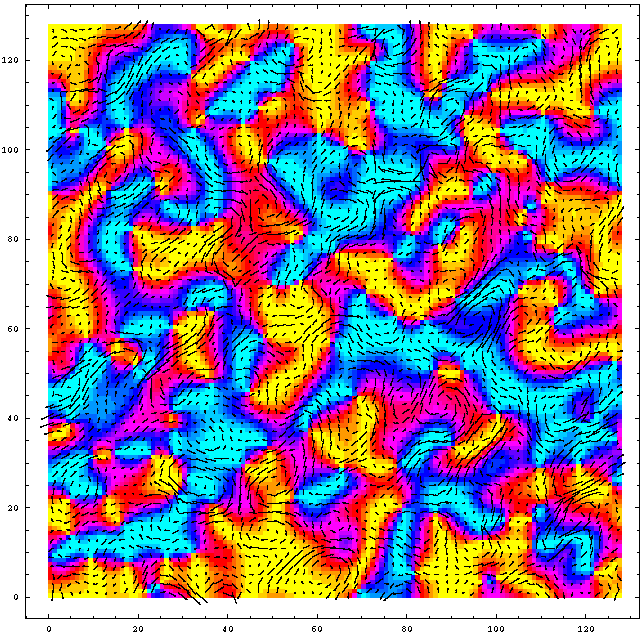 We did extensive studies based on simulations the dynamics of topological defects in nematic liquid crystals. We showed that backflow, the coupling between the order parameter and the fluid velocity fields, has a significant effect on the motion of these defects. In particular, the defect speed can depend strongly on the sense of rotation of the director about the defect core. For more on this see:
We did extensive studies based on simulations the dynamics of topological defects in nematic liquid crystals. We showed that backflow, the coupling between the order parameter and the fluid velocity fields, has a significant effect on the motion of these defects. In particular, the defect speed can depend strongly on the sense of rotation of the director about the defect core. For more on this see:
Hydrodynamics of domain growth in nematic liquid crystals in 2D or 3D;
Hydrodynamics of topological defects in nematic liquid crystals;
Disclination dynamics in nematic liquid crystals without hydrodynamics;
Phase ordering in nematic liquid crystals.
We established the physical principles behind a novel method of dynamically controlling the boundary conditions at the surface of a nematic liquid crystal using a surface flexoelectric effect. By moving the surface directors, one can manipulate defects that lie near the surface. We demonstrated how an understanding of these effects can be employed to create a bistable display that retains its state with no applied voltage. A device based on this principle is now being manufactured by ZBD Displays Limited (Malvern, U.K.).
The frustrated XY model
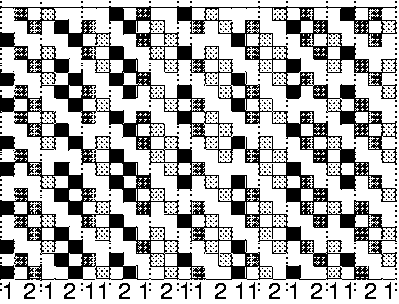 The frustrated XY model provides a framework to study two-dimensional arrays of Josephson junctions and superconducting wire networks. A perpendicular magnetic field induces a finite density of circulating supercurrents, or vortices, within the array. The interplay of two length scales - the mean separation of vortices and the period of the underlying physical array - gives rise to a wide variety of interesting physical phenomena. Many of these effects influence the finite temperature superconducting phase transitions. Experiments have measured the critical exponents of these transitions, allowing the opportunity to do careful comparison of theory and experiment. My Ph.D. thesis focused on the critical properties of the frustrated XY model at both commensurate and incommensurate fields and in the presence of disorder in both 1D ladders and 2D grids.
The frustrated XY model provides a framework to study two-dimensional arrays of Josephson junctions and superconducting wire networks. A perpendicular magnetic field induces a finite density of circulating supercurrents, or vortices, within the array. The interplay of two length scales - the mean separation of vortices and the period of the underlying physical array - gives rise to a wide variety of interesting physical phenomena. Many of these effects influence the finite temperature superconducting phase transitions. Experiments have measured the critical exponents of these transitions, allowing the opportunity to do careful comparison of theory and experiment. My Ph.D. thesis focused on the critical properties of the frustrated XY model at both commensurate and incommensurate fields and in the presence of disorder in both 1D ladders and 2D grids.
Algorithms for Multiscale Modelling
An important aspect of our work is the development of models and multi-scale computer simulation methods to study these systems. Algorithmic work includes:
Coupling Molecular Dynamics to a "Continuum" Mesh Background: (i) Overview of the problem (see the first article in this volume); (ii) Theory; (iii) LAMMPS package; (iv) LAMMPS package v2;
Incorporating thermal fluctuations in an lattice-Boltzmann fluid;
Green's function molecular dynamics; ver2;
Hybrid lattice-Boltzmann/molecular dynamics simulations for particles in liquid crystals;
Lattice-Boltzmann simulations of liquid crystal hydrodynamics and with colloidal inclusions
